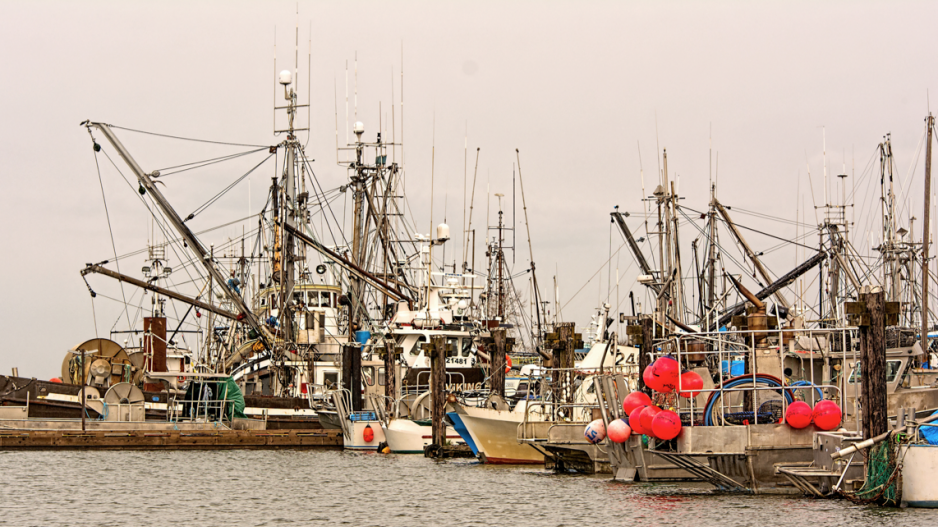There will be no commercial openings for Fraser River sockeye salmon this year – that’s practically a guarantee – but there likely will be openings for Fraser River pink salmon, thanks to higher than expected returns.
And there have already been some sockeye caught by commercial fishermen for Skeena and Nass River.
But B.C. commercial fishermen this year may not make much money from the fish they catch because there is such an abundance of salmon in Alaska and Russia that it is depressing the prices in export markets, according to fisheries consultant Greg Taylor of FishFirst Consulting.
The pre-season forecast for Fraser River pink salmon was 6.1 million, but based on test fisheries, the Fraser River panel has upped the in-season forecast to 8.6 million.
Fraser River sockeye returns, on the other hand, are dismal, as expected. So dismal, in fact, that even aboriginal food, social and ceremonial fisheries for Fraser River sockeye have been closed.
The pre-season forecast for Fraser River sockeye was just 1.9 million. That’s barely enough to allow for escapement and for some aboriginal food fisheries. To date, about 600,000 Early Stuart and Early Summer sockeye have returned. Last year’s return for Fraser River sockeye was 6.8 million.
This year’s Fraser River sockeye are the offspring of the few fish that made it past Big Bar in 2019. That’s when a massive landslide choked the river off and prevented fish from getting to spawning grounds above Big Bar.
Not surprisingly, many of the sockeye that have made it past the Mission Bridge counting station so far this year are five-year-olds, not four-year-olds born in 2019, noted Fiona Martens, chief of Fisheries Management Programs for the Pacific Salmon Commission.
As for pinks, they only live two years, so this year’s return -- with 2021 as their brood year - would have been unaffected by the Big Bar slide.
Pinks have been returning in fairly good abundance.
Alexandra Morton, an independent researcher who believes farmed salmon pose a serious risk to wild salmon, pointed to higher pink salmon returns in the Discovery Islands area as evidence that the removal of salmon farms there has had a positive impact.
Salmon farms in the Discovery area were ordered removed by the federal fisheries minister, starting in 2020.
“I knew this generation had a better chance of surviving because they free of the open wounds caused by the farm lice,” Morton said in a press release. “But this return is beyond astonishing! It makes a person consider what our salmon fisheries might be today if salmon farming had never been allowed - like in Alaska.”
Taylor said pink salmon are returning in greater abundance pretty much everywhere in the Pacific Ocean, including regions that have no fish farms.
“That’s a classical example of correlation is not causation, because there is pink salmon everywhere on this coast – Nass River, Skeena River – lots and lots of pink salmon," he said. "Russia is full of it. Alaska had good runs in southeast Alaska. We’re seeing pinks in Finland, for God’s sakes.”
As for Fraser River sockeye, they are returning at a time when conditions are very poor – lower river levels and higher temperatures.
“This entire season, the water temperatures have been well above the historical mean,” Martens said. “These adverse environmental conditions are just making it increasingly difficult for salmon to reach the spawning grounds.”
Sockeye are doing better in more northern regions. According to Taylor, commercial and aboriginal fishermen have caught roughly 257,000 Skeena River sockeye and 168,000 Somass River sockeye.
But the prices Canadian fishermen get for those fish could be depressed, when trying to sell outside of Canada.
“The world is awash in salmon," Taylor said. "Much of the additional salmon is coming from Russia, who are dumping it into the markets they can sell to at rock bottom prices. And Alaska had a decent season – a big season in sockeye and a decent season in pinks and chums.”
Russian pink salmon prices have dropped 15 percent “as a predicted record-setting catch has increased supply far above domestic demand,”
Worse, B.C. salmon may fetch a lower price in export markets due to a lack of Marine Stewardship (MSC) certification.
"One of the issues that we have here in Canada is we do not have our Marine Stewardship Certification," said Dawn Webb, organizer for the UFAWU-Unifor fishermen's union.
Commercial fishermen in B.C. are also facing higher overhead costs for things like trucking.
"That also impacts the price that buyers are willing to pay fishermen, and so we are seeing some of the lowest prices in decades, unfortunately."




